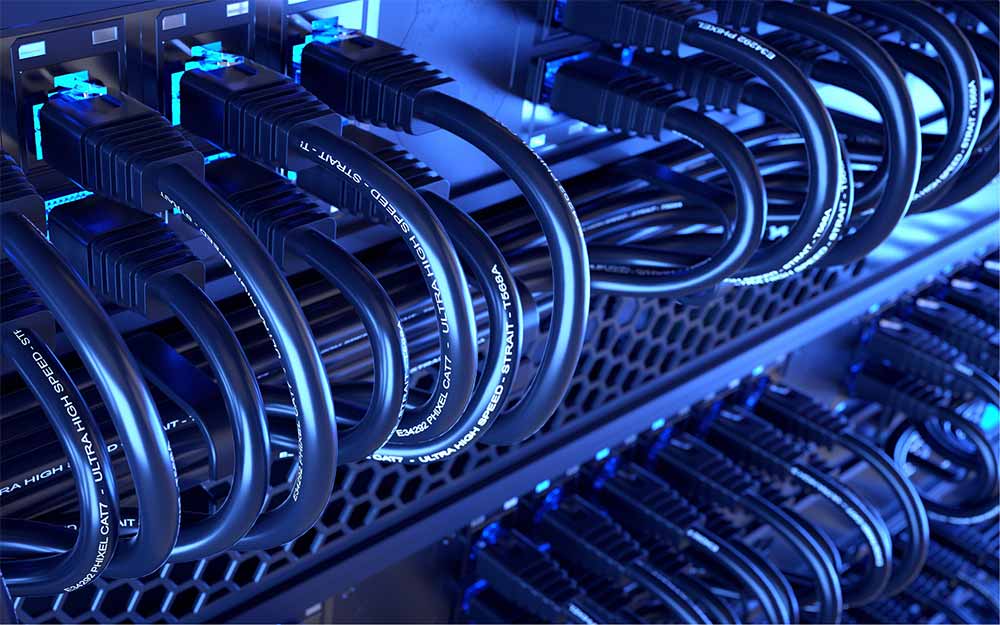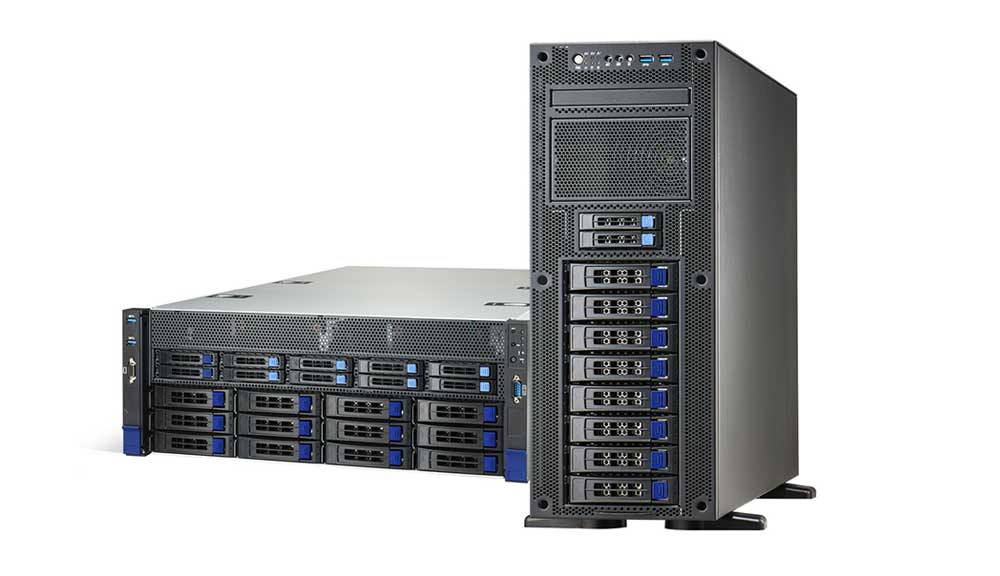Choosing the right HPC solution for massively parallel workloads
Products: FT83AB7129,

Parallel computing requires a different technology focus compared to IO-heavy and Big Data workloads. Maximize performance with Tyan and Intel® Xeon® Scalable Processors.
There's been a rapid rise in high performance computing over the past decade or so. And it's set to rise still further. According to one survey [1], the market is set to grow from $36.0 billion in 2022 to $49.9 billion by 2027, at an annual growth of 6.7%.
Parallel computing has played a big part in HPC growth and performance. By operating multi-core systems in parallel, it's possible to split large workloads into a series of separate tasks that can all be handled simultaneously. Crucially, each processor core accesses the same memory but operates independently, sharing the workload.
What's prompted the growth in parallel HPC is the need to tackle areas of research that have been highly difficult in the past. For example, there have been incredible advances in biotechnology – in fields such as genome research – that were previously being handled by highly expensive super computers.
We've seen the emergence of algorithms like BLAST (Basic Local Alignment Search Tool), which is being used to search DNA or RNA sequences. Researchers can call on BLAST to compare a subject protein or nucleotide sequence with a library or database of sequences to enable them to identify database sequences.
One of the factors that has driven the take-up of parallel computing is the growing availability of the cloud. By calling on cloud services, businesses can have a flexible approach to parallel processing by integrating an on-premise system with cloud resources. This enables workloads to move seamlessly between the two infrastructures.

In such circumstances, companies will need to opt for a server architecture that can deliver the best results. For example, solutions based on 3rd generation Intel® Xeon® processors offer organisations high-quality performance whether they're located in a data center or powering resources in the cloud.
One of the key facets of 3rd generation Intel Xeon processors is that they can support this mix of environments while containing advanced levels of encryption. Most importantly, they offer built-in AI acceleration, which means that they can deliver optimum performance for the type of complex functions that drive HPC applications.
The Tyan Thunder HX FT83A-B7129, for example, is a 4U dual-socket HPC Server with 32 DDR4 DIMM slots. Powered by the latest 3rd Gen Intel Xeon Scalable Processors, the platform can support 10 DW GPU and features one spare PCIe x16 slot for further expansion. The specification also includes twelve 3.5" SATA with four optional NVMe U.2 hot-swap, tool-less drive bays. With the right workload, these platforms can offer higher performance and reduce power consumption when compared to traditional CPU centric platforms.
Such systems can be deployed to solve the most computationally-intensive challenges, such as cryptography, oil and gas discovery, particle physics simulations, genetic sequencing, large-scale facial recognition, plus Machine Learning and Artificial Intelligence applications.
The Tyan Thunder series is a line of world class barebones server systems built for the most demanding HPC workloads and based on Intel's latest technology, including 3rd Gen Intel Xeon Scalable Processors. For more information about our newest products, view the Tyan/Intel Product Catalog 2022.
There's been a rapid rise in high performance computing over the past decade or so. And it's set to rise still further. According to one survey [1], the market is set to grow from $36.0 billion in 2022 to $49.9 billion by 2027, at an annual growth of 6.7%.
Parallel computing has played a big part in HPC growth and performance. By operating multi-core systems in parallel, it's possible to split large workloads into a series of separate tasks that can all be handled simultaneously. Crucially, each processor core accesses the same memory but operates independently, sharing the workload.
Massively parallel processing
Massively parallel processing (MPP) systems link processing nodes together via a high-speed network. The technology has been used extensively in areas such as meteorology, where there’s a need to wrestle with large-scale atmospheric fluid dynamics equations extremely quickly.
Read: How to balance your HPC hardware with Tyan and Intel
Download: Practical hardware design strategies for HPC workloads in 2022
Download: Practical hardware design strategies for HPC workloads in 2022
What's prompted the growth in parallel HPC is the need to tackle areas of research that have been highly difficult in the past. For example, there have been incredible advances in biotechnology – in fields such as genome research – that were previously being handled by highly expensive super computers.
We've seen the emergence of algorithms like BLAST (Basic Local Alignment Search Tool), which is being used to search DNA or RNA sequences. Researchers can call on BLAST to compare a subject protein or nucleotide sequence with a library or database of sequences to enable them to identify database sequences.
Scaling to large data sets
Parallel architectures in HPC are also being used in cybersecurity scenarios, where parallel data mining offers a new way to detect intrusions on large-scale networks. Again, this is an application that requires extensive number-crunching to analyze network traffic from multiple sources and in near-real time.One of the factors that has driven the take-up of parallel computing is the growing availability of the cloud. By calling on cloud services, businesses can have a flexible approach to parallel processing by integrating an on-premise system with cloud resources. This enables workloads to move seamlessly between the two infrastructures.

In such circumstances, companies will need to opt for a server architecture that can deliver the best results. For example, solutions based on 3rd generation Intel® Xeon® processors offer organisations high-quality performance whether they're located in a data center or powering resources in the cloud.
One of the key facets of 3rd generation Intel Xeon processors is that they can support this mix of environments while containing advanced levels of encryption. Most importantly, they offer built-in AI acceleration, which means that they can deliver optimum performance for the type of complex functions that drive HPC applications.
Choosing the right hardware
There are a diverse range of HPC systems currently available, powered by a diverse range of processors. Tyan offers a wide range of GPU computing platforms that are specifically designed for high performance computing and parallel computing environments. These solutions range from 1 GPU up to 8 GPUs inside traditional 1U, 2U and 4U rackmount chassis, which help reduce the rack space requirements.The Tyan Thunder HX FT83A-B7129, for example, is a 4U dual-socket HPC Server with 32 DDR4 DIMM slots. Powered by the latest 3rd Gen Intel Xeon Scalable Processors, the platform can support 10 DW GPU and features one spare PCIe x16 slot for further expansion. The specification also includes twelve 3.5" SATA with four optional NVMe U.2 hot-swap, tool-less drive bays. With the right workload, these platforms can offer higher performance and reduce power consumption when compared to traditional CPU centric platforms.
Such systems can be deployed to solve the most computationally-intensive challenges, such as cryptography, oil and gas discovery, particle physics simulations, genetic sequencing, large-scale facial recognition, plus Machine Learning and Artificial Intelligence applications.
The Tyan Thunder series is a line of world class barebones server systems built for the most demanding HPC workloads and based on Intel's latest technology, including 3rd Gen Intel Xeon Scalable Processors. For more information about our newest products, view the Tyan/Intel Product Catalog 2022.

